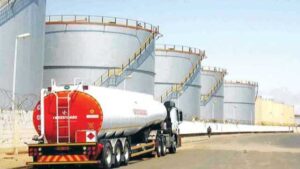Flexi tank vs Flexi bag
Understanding the Difference Between Flexitank and Flexibag
When it comes to transporting bulk liquids, the terms “flexitank” and “flexibag” are often used interchangeably. However, they refer to distinct solutions within the logistics industry. In this article, we will clarify the differences between flexitanks and flexibags, highlighting their unique features and applications.
What is a Flexi tank?
A flexi tank is a large, flexible container designed specifically for the transportation of non-hazardous liquids in bulk. It is typically used within a standard 20-foot shipping container, effectively converting it into a bulk liquid transporter.
Key Features of a Flexitank:
1. Capacity: Flexitanks can hold between 10,000 and 24,000 liters of liquid, depending on the type and manufacturer.
2. Material: Made from multiple layers of polyethylene (PE) and an outer layer of woven polypropylene (PP), ensuring durability and leak resistance.
3. Installation: Installed inside a standard shipping container, providing a cost-effective solution for bulk liquid transport.
4. Use: Primarily used for non-hazardous liquids such as food-grade oils, wine, juices, chemicals, and industrial liquids.
Benefits of Using Flexitanks:
– Cost-Effective: Reduces transportation costs by maximizing container space.
– Efficiency: Simplifies loading and unloading processes.
-Safety: Minimizes contamination risk with single-use options.
– Environmental Impact: Reduces the need for intermediate packaging and waste.
What is Flexi bag?
A flexi bag is another term used to describe a type of flexible container for transporting bulk liquids, similar to a flexitank. The term “flexibag” is often used interchangeably with “flexitank,” but there can be regional preferences or specific industry uses where one term is more commonly employed than the other.
Key Features of a Flexibag:
1. Capacity: Comparable to flexitanks, holding between 10,000 and 24,000 liters.
2. Material: Constructed from similar materials such as polyethylene (PE) and polypropylene (PP), ensuring strength and flexibility.
3. Installation: Also installed within standard shipping containers for efficient liquid transportation.
4. Use: Suitable for transporting a wide range of non-hazardous liquids, including food products, chemicals, and industrial liquids.
Key Differences Between Flexitank and Flexibag
While flexitank and flexibag are often used interchangeably, the main difference lies in the terminology rather than the product itself. Both serve the same primary function of transporting bulk liquids safely and efficiently.
1. Terminology:
– Flexitank: More commonly used in some regions and industries.
– Flexibag: Preferred term in other regions, but refers to a similar product.
2. Usage Context:
– Flexitank: May be used more frequently in technical documentation and industry standards.
– Flexibag: Often used interchangeably with flexitank in various markets.
Conclusion
In essence, flexitanks and flexibags are designed to fulfill the same purpose—transporting bulk liquids in a cost-effective, safe, and efficient manner. The primary distinction between the two lies in the terminology used within different regions or contexts.
Understanding this can help businesses make informed decisions when selecting the right solution for their bulk liquid transportation needs.
For more information on bulk liquid transport solutions and industry insights, stay tuned to our blog and explore our detailed articles on related topics. Whether you refer to it as a flexitank or a flexibag, these flexible containers are revolutionizing the way liquids are transported globally.

Flexi tank vs Flexi bag





